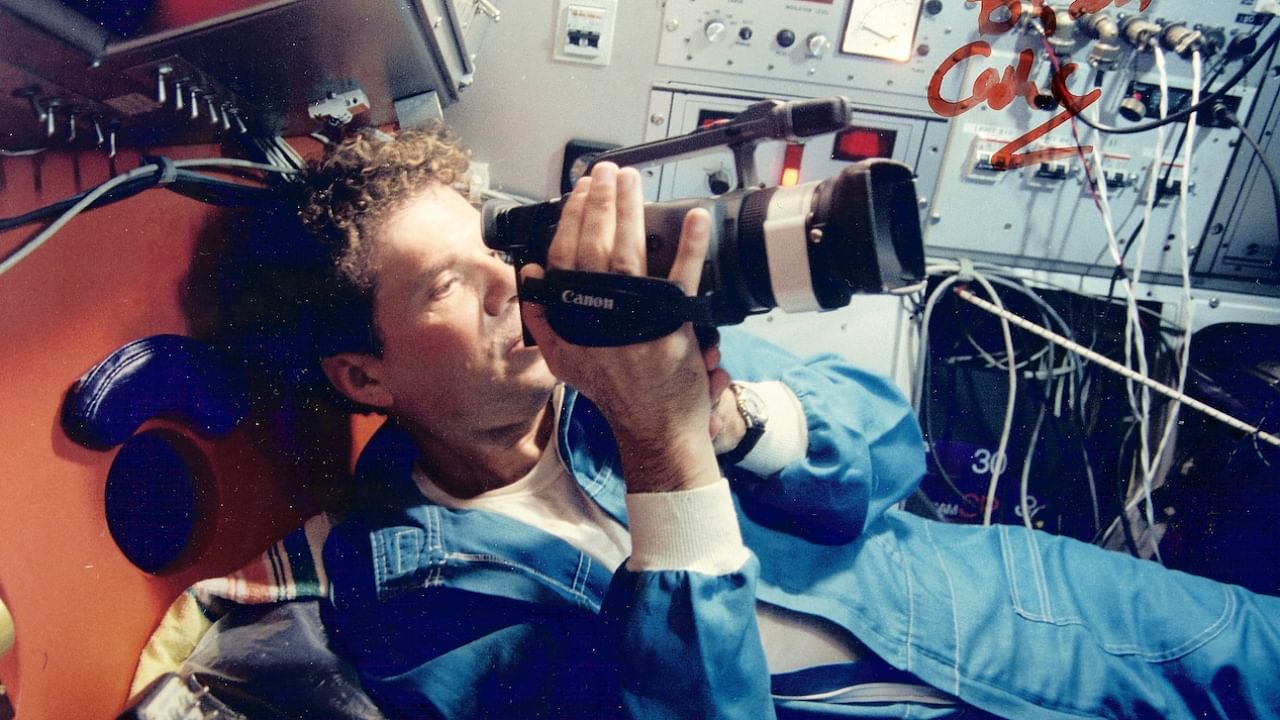
Twenty years ago, Dr Michael Guillén was trapped in a Russian submersible during a trip to the bottom of the Atlantic Ocean.
He was then the Science Editor of ABC.
Today, on June 22, as the search for the 'Titan' submersible intensifies, Dr Guillén, who was an award-winning physics instructor at Harvard University, is a best-selling author and the host of the popular podcast 'Science + God', relives those harrowing moments he experienced in an interview with Anupama Ramakrishnan.
What made you undertake the trip to the Titanic wreckage and when was it?
In September of 2000 – when I was the Science Editor at ABC News – I was invited to become the first TV correspondent to report from the Titanic. At first I was hesitant, because I have a deathly fear of water. But I accepted, because it was my job and also because I was interested in seeing the Titanic for myself and to educate the public about the famous ship. I was not disappointed. Despite the accident that almost cost me my life, it was an emotional experience I shall never forget.
Were you aware of the risks while undertaking the arduous journey?
Yes, I was. But I also knew that the submersible was very reliable. It was originally built by the Russians for deep-sea scientific research and it was time-tested. It was a serious vehicle, operated and piloted by serious-minded people, so I felt safe inside of it. Back then, France was the only other nation that had such subs, capable of surviving the enormous pressures at the bottom of the Atlantic Ocean. So it was quite special.
Could you explain how the journey to the wreckage was and how risky it was?
We began our journey at Halifax, Nova Scotia. We then shipped out aboard a massive Russian research ship, the Akademik Mstislav Keldysh, to the spot in the North Atlantic above the wreck of the Titanic.
The dive down to the bottom of the Atlantic took about two-and-one-half hours and it went very smoothly. We then toured the bow of the ship, pausing for a moment of prayer for the men, women, and children who lost their lives there.
When we began going toward the stern, my attention was immediately focused on the Titanic’s huge, shiny propeller. When the Titanic sank it broke into two pieces. The bow sank went straight down; but the stern flipped upside down and landed on its back, exposing the giant propeller.
I quickly noticed that our sub was speeding up, which didn’t make sense to me; we should be slowing down. I later learned that the acceleration happened because we were caught in a fast-moving underwater current. The current slammed us into the blades of the propeller. We felt the collision and watched in horror as giant pieces of rusted metal started falling on our tiny sub. At first we were shocked, then we fell silent because we realised we were in serious trouble.
For many minutes we did not speak because we didn’t want to distract our pilot, Viktor. As a former Russian MiG pilot he was used to dealing with life-and-death crises, keeping a cool head under pressure. As a scientist, I tried to think of ways we might be able to be rescued, but nothing I could imagine was realistic. So I came to the conclusion that we were as good as dead. I felt a great sadness; I realised I’d never see my wife again. These words came into my mind: “This is how it’s going to end for you.” But more than a half-hour later my crushing sadness was replaced by a sense of enormous peace. It’s not easy to explain scientifically. And then suddenly the ship became quiet. Its engine stopped working. I thought we were surely dead in the water. But then I felt as though the sub was floating.
Curious, unable to remain silent, I turned to Viktor, and asked: “Okay?” He turned to me and, with a giant smile, said in a thick Russian accent: “No problem.” It took me a moment to understand what he meant; but very quickly I realised that his great skill as a fighter pilot had, against all odds, freed us for the grasp of the giant propeller blades. I was so elated it felt like a had won many lotteries at once. At death’s door, I had been granted a second chance at life. I will never forget that feeling and to this day makes me grateful for every day that I am alive.
What do you think are the probabilities of finding and rescuing the adventurers on the 'Titan', now lost in the depths of the Atlantic Ocean?
I will not give up hope until the bitter end. I am praying for a miraculous rescue, like the one I am grateful to have experienced. But realistically speaking, the odds are against having enough time to locate the vessel, figure out a way to lift it to the surface, and un-bolt the sub to free the passengers. Indeed, we might never find the sub. It took more than 70 years to find the sunken Titanic – a feat achieved in 1985, by my good friend Bob Ballard, the famous marine scientist for Woods Hole in Massachusetts. How long would it take to locate the sunken Titan, whose size is tiny compared to the mighty Titanic.
